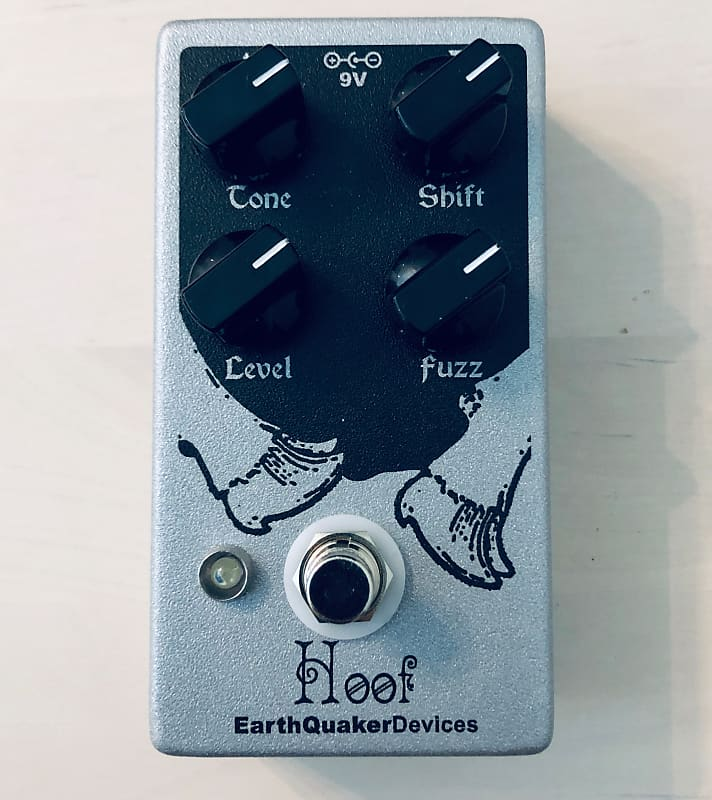Contents
Once it comes to Hoof vs. Cloven Hoof, different people have different ideas about the winner. Hoof is a popular fuzz pedal that replicates classic vintage fuzz pedals and gives them a modern twist. On the other hand, Cloven Hoof is an extended version of Hoof pedals that adds more tonal shaping to the sound. Continue reading if you like to get to know pedals and decide the winner on your own.
Comparison
| Hoof | Cloven Hoof | |
| Controls | Fuzz, Tone, Level | Fuzz, Tone, Level and Shift |
| Midrange Emphasis | Balanced | Adjustable (via Shift control) |
| Tonal Flexibility | Tone control affects overall tone | Shift control adjusts the midrange |
| Signature Sounds | Smooth, Vintage | Customizable with Midrange Shift |
| Customization options | Limited | Multiple |
Hoof Vs. Cloven Hoof: The Sonic Faceoff
Control
For your information, Hoof features a direct control layout well-liked by veterans as well as novices. The tone knob adjusts the brightness/darkness of the fuzz and lets you dictate how it sits in the mix. Besides that, the fuzz knob adjusts the saturation and distortion while the level knob controls the volume. As a whole, the simplicity and user-friendliness of the interface make Hoof an ideal pedal for those that appreciate the plug-and-play approach.
About Cloven Hoof, it boasts similar controls to the Hoof but includes an additional “Shift” knob. By taking advantage of that, you can change midrange frequencies for a personalized tune in times of need. Clockwise turns produce a modern tone with low and high emphasis while counterclockwise ones give tone a vintage character. If you opt to pick up Cloven Hoof, you should have a lot of room for experimentation.
Adaptability
To put it plainly, Hoof is good at adapting because it’s capable of covering a wide range of fuzz tones. From mild and lightly saturated overdrive-like fuzz to thick and saturated fuzz with harmonic content, Hoof never fails to please. In the case of Cloven Hoof, the integration of Shift control guarantees all sorts of tonal variations in use. That means tuning Cloven Hoof to match particular needs and requirements is usually a walk in the park.
Tone
A lot of musicians describe Hoff’s tone as warm, smooth and vintage for most of the time. Aside from that, the saturated fuzz tones that Hoff generates nicely complement classic fuzz circuits. For Cloven Hoof, it effectively and efficiently customizes the midrange characteristics of the tone while retaining its overall character. The result of that process is a classic and unique sound that suits multiple atmospheres.
DIY Modifications: How To Customize Hoof And Cloven Hoof
Bias Control Mod
In layman’s terms, the mod involves tweaking bias transistors in the pedal so you can modify the fuzz tone and its character.
Open the pedal casing then locate where the transistors are mounted onto the printed circuit board. Here, you have to find points labeled “Q1” and “Q2” (commonly used to identify the bias points of the transistors). Next, you need to solder a potentiometer between the ground and base of the transistor. The potentiometer permits you to adjust the bias of each transistor and regulate tonal characteristics of the pedal.
Tone Control Mod
The mod is going to grant you variable tone control for your fuzz pedal and so help you adjust the frequency response of the fuzz.
First, you must find the capacitor and resistors responsible for tone shaping in the tone control network. Second, wire a potentiometer in parallel with the tone components. One pot node goes to the network input while the other goes to the output. The wiper goes to the junction point of the original components. After you finish, use the potentiometer to adjust the tone.
Note: Feel free to experiment with different capacitor and resistor values for the best tonal response.
Clipping Diode Mod
The mod changes the clipping diodes in the circuit which is the one that manages the pedal’s saturation and clipping characteristics. You need to locate the clipping diodes connected in series with the audio path. Depending on the model you get, they can be silicon, LED or other types. Remove the existing diodes and replace them with another type, such as germanium or silicon, to achieve the ideal distortion characteristics.
Voltage Starve Mod
Lowering the voltage supplied to the pedal can result in a sputter or starved fuzz sound.
Start by identifying the power supply points on the printed circuit board. Next, insert a resistor between the power supply unit and the positive power rail to drop the voltage supplied by the pedal. Proceed to change the resistor value to achieve the best voltage drop: the lower voltages, the more sputter and gated tones become.
Make sure you take all necessary electrical precautions when making these modifications. Consult experts and read the manufacturer’s guidelines to understand your pedal’s limitations so you don’t damage it.

Hi music fan! I am Jeff. Hope that you enjoy some stuff I shared here in my personal blog.
About myself, Currently I am in charging as Artist Manager/Music Supervisor at 72 Music Management. I did managed album to Grammy Award in 2017 with 7 Nominations from 2014-2020 and had the opportunities to work with : A.J. Croce, Blind Boys of Alabama, Bobby Rush, Dom Flemons, Dustbowl Revival, Sarah Grace
Governor of the Memphis Chapter of The Recording Academy is one of a award that I am lucky to achieved.



